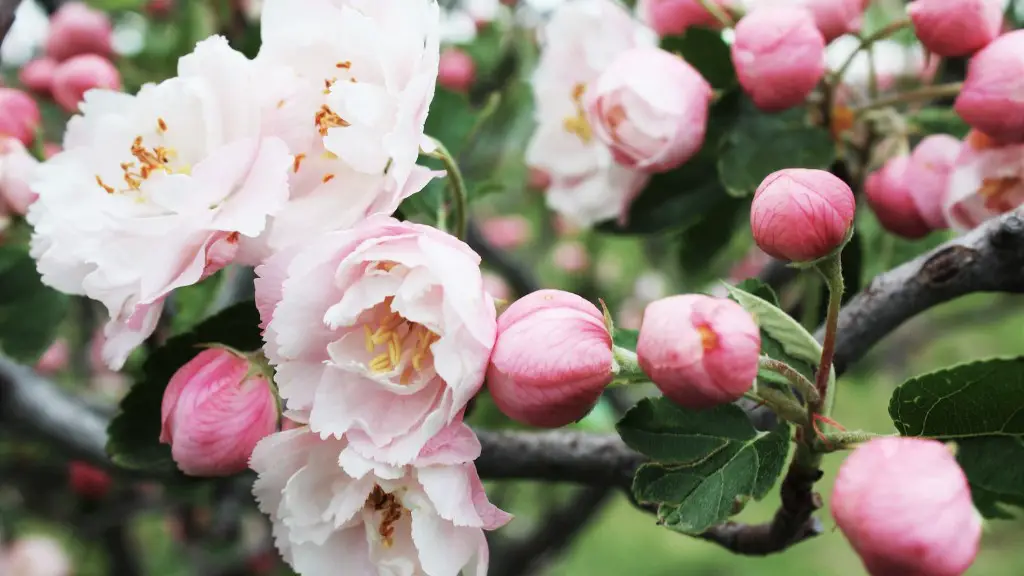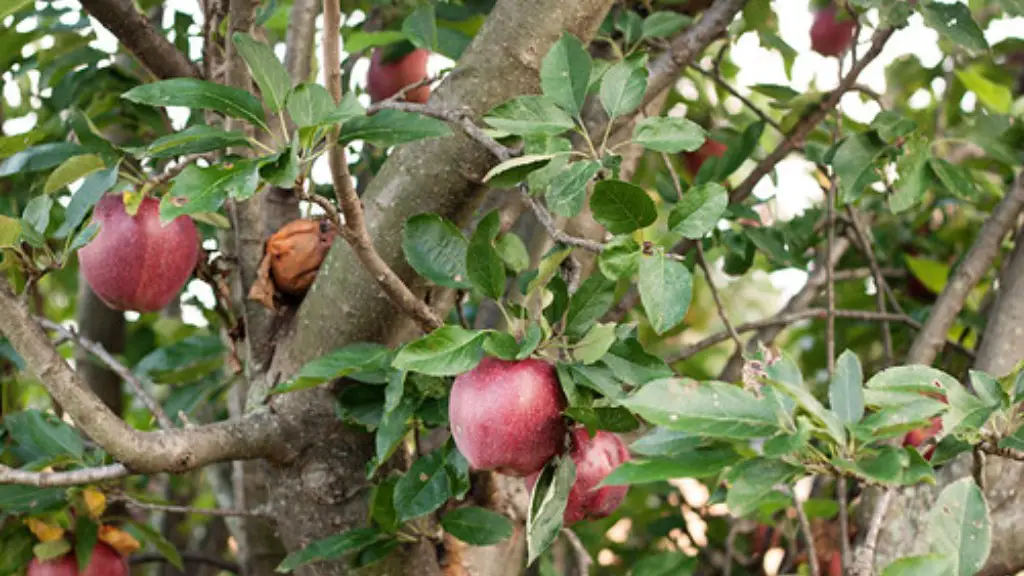When it comes to knowing when to spray a cherry tree, it can be a perplexing problem for homeowners. Cherries are delicate fruits and optimal spraying and fertilizing are important for a successful harvest. With proper monitoring and timing, a cherry tree can produce and sustain healthy fruit for many years. There are some common time signatures when it comes to spraying your cherry tree. Knowing when to spray and how often will ensure a healthy cherry tree and tasty and abundant fruit.
The first thing to consider is the type of cherry tree you are harvesting as different varieties require different spraying regimens. Sweet cherries, for example, usually require three sprayings during the spring, while tart cherries are usually only sprayed twice. It is important to do your research and consult experts when deciding what type of tree to plant and what type of spray schedule will be most beneficial.
In general, the most common time to spray a cherry tree is in March, prior to bud break. This initial spraying is important for helping to control aphids, mites, and other pests that thrive during the warmer weather. This treatment also helps to control diseases such as powdery mildew and black knot, which can damage the development of the fruit and cause poor yields.
April is the next time to spray the cherry tree, just as the tree begins to bloom. This time the sprays target worms and other damage insects, as well as fungal diseases such as brown rot, which can infest the fruit itself. Finally, a third spray in May can help eliminate any remaining pests or diseases that may be lingering. By spraying throughout the season, your cherry tree will be better protected and will produce high-quality fruit.
When it comes to what products you should use, there are many options available. The most common type of chemical spray is a fungicide, which helps to protect the leaves and the fruit against the development of diseases. Insecticides are also available, which help to target pests, and some orchardists prefer to use a combination of the two. It is important to properly read and follow the instructions on the chemical label for best results.
Along with chemical sprays, some gardeners also opt for organic approaches to caring for their cherry trees. For example, introducing certain predatory bugs to the tree can help control nasty pests without the use of chemicals. Additionally, some gardeners choose to hang kite-shaped gloves or reflective materials on their trees as a way to repel insects.
Fertilizing
Fertilizing your cherry tree is just as important as spraying, as it helps to provide the tree with much needed nutrients. A balanced fertilizer with a ratio composed of equal parts nitrogen, phosphorus and potassium is best for cherry trees. Adding the fertilizer in early spring can help support the tree’s growth and give it the energy it needs to bear more fruit.
This fertilizer should be applied every two to three weeks throughout the season, beginning at the first sign of growth. Adding an additional layer of mulch during the winter months can also help keep the soil moist and protect the tree’s roots from freezing temperatures.
It is important not to over-fertilize the tree, as this can lead to a build-up of fertilizer salts in the soil, which can negatively affect the tree’s health. It is also important to keep an eye on the soil’s pH levels to ensure that the tree is receiving the proper nutrients.
Watering
Adequate watering is an essential part of caring for a cherry tree, particularly during periods of drought. The tree should receive 1-2 inches of water each week, either through rain or supplemental watering. Plants require more water when they are young and less water as they mature, so it is important to adjust the water accordingly.
An easy way to check if the tree is receiving enough water is to look for signs of leaf wilting. In general, the soil should be kept consistently moist throughout the season and during periods of drought, it may be necessary to water the tree more frequently.
Deep and infrequent watering is best for cherry trees, as this helps the tree to build a strong and deep root system, which in turn allows it to access more water during periods of drought.
Pruning
Pruning is important for the health and longevity of a cherry tree, and should be done every year. Pruning helps to encourage new growth and helps to keep the tree strong and healthy. Pruning should be done in the late winter or early spring, before the tree begins to bloom.
Begin by removing any dead or damaged branches, as these can take away from the tree’s energy. Next, remove any branches that are growing inward, as this can cause overcrowding and inhibit the growth of other branches. Finally, thicken the tree by reducing the length of some of the outer branches, but be sure not to over prune.
It is important to use sharp shears or a pruning saw to ensure a clean cut and to protect the tree from disease. By following these simple tips, your cherry tree will be well taken care of and ready to produce healthy and abundant fruit.
Harvesting
Proper harvesting is essential for a quality crop of cherries. The key is to wait until the cherries are at their peak of ripeness in order to obtain the best flavor and texture. Depending on the variety of cherry tree, this can range from late June to early August.
Cherries will also begin to change color as they ripen, from green to yellow or from yellow to red. The cherries can also be tested for ripeness by gently squeezing them. If the cherries are soft, then it is time to harvest.
Harvesting can be done one of two ways – by hand or by machine. If harvesting by hand, the stem should be removed from the tree by gently twisting it, leaving as much of the stem attached to the cherry as possible. If harvesting by machine, ensure that the machine is not set too high and that the cherries are not being damaged or bruised in the process.
Once the cherries are harvested, they can be enjoyed right away or stored in the refrigerator for up to one week. Freezing cherries is also an option, as they can be frozen for up to 6 months.
Storage and Preservation
Storing and preserving cherries is a great way to enjoy homegrown cherries all year round. One of the easiest ways to preserve cherries is by canning them in a sugar syrup. This not only helps to sweeten the cherries, but also helps to keep them preserved for up to one year.
Another method is to dry the cherries. In order to dry cherries, they need to be pitted and halved before laying them flat on a tray and placing in the oven at low heat. Once they are dry, they can be stored in an air-tight container in a cool and dry place.
Cherries can also be frozen without added sugar. To freeze cherries, simply place the pitted and halved cherries in a single layer on a tray and place in the freezer. Once frozen, the cherries can be stored in a plastic bag or container for up to 6 months.
Whichever method you choose, with proper care and maintenance a cherry tree can provide delicious fruits for many years to come.




